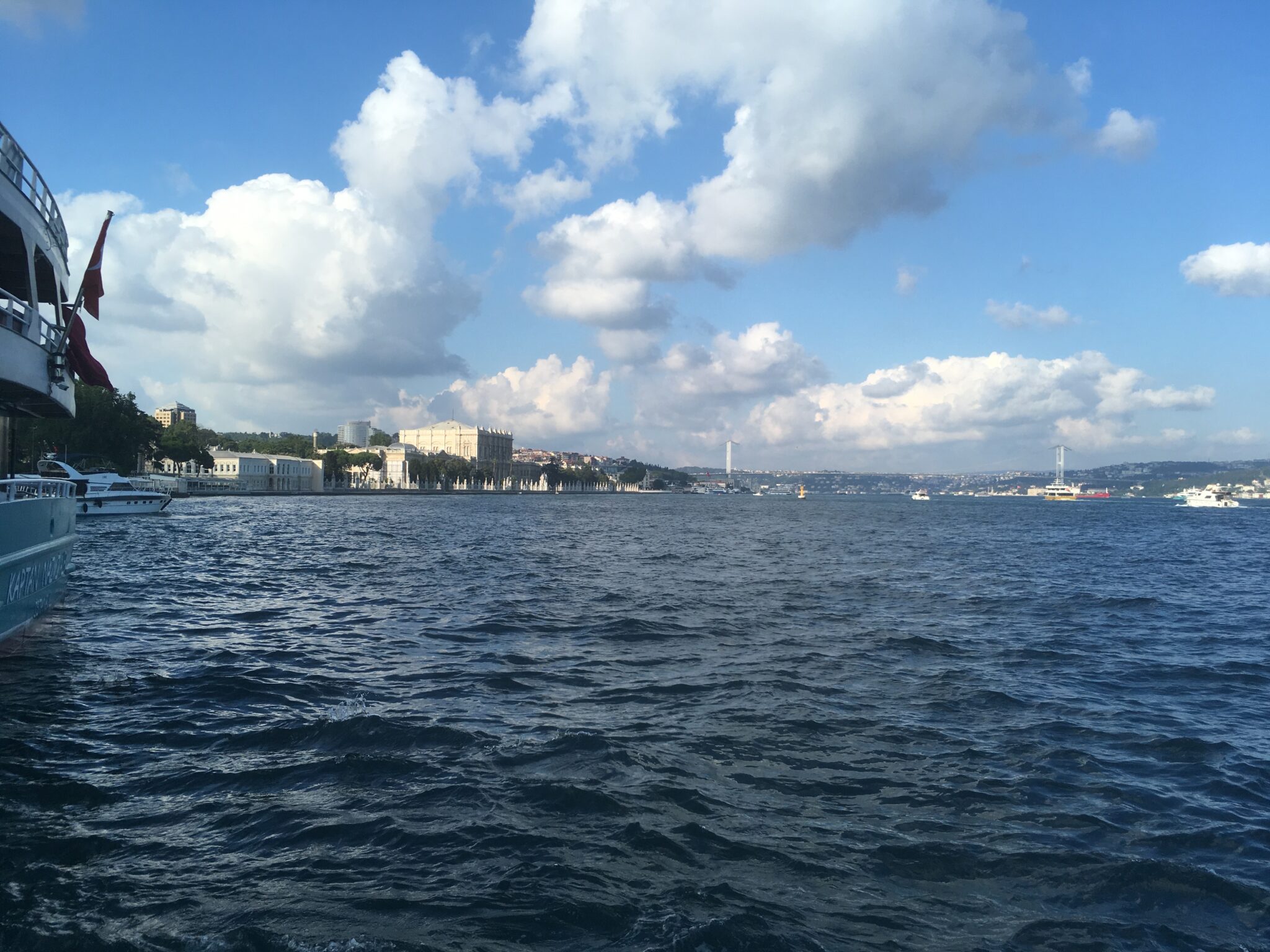İstanbul is a big city, and each of its neighbourhoods is an adventure in itself. For this reason, each Istanbul Instalment features different tips for separate, specific areas. Continue with this post to learn about:
- The Kadıköy area
- A bit about the Turkish language: How to read it
- Night out ideas & options
- Transportation (by Sea & Land)
As mentioned, no trip to İstanbul would be complete without visiting the Asian side of the city.
Also known as the Anatolian side, the Asian side has a slightly different feel than its European sister. Decorated with affluent old Ottoman style palaces and mansions, the banks are a site all themselves. I highly recommend a river cruise up the Bosphorus, but that in itself is a different experience than exploring around this area. A river cruise demands its own instalment!
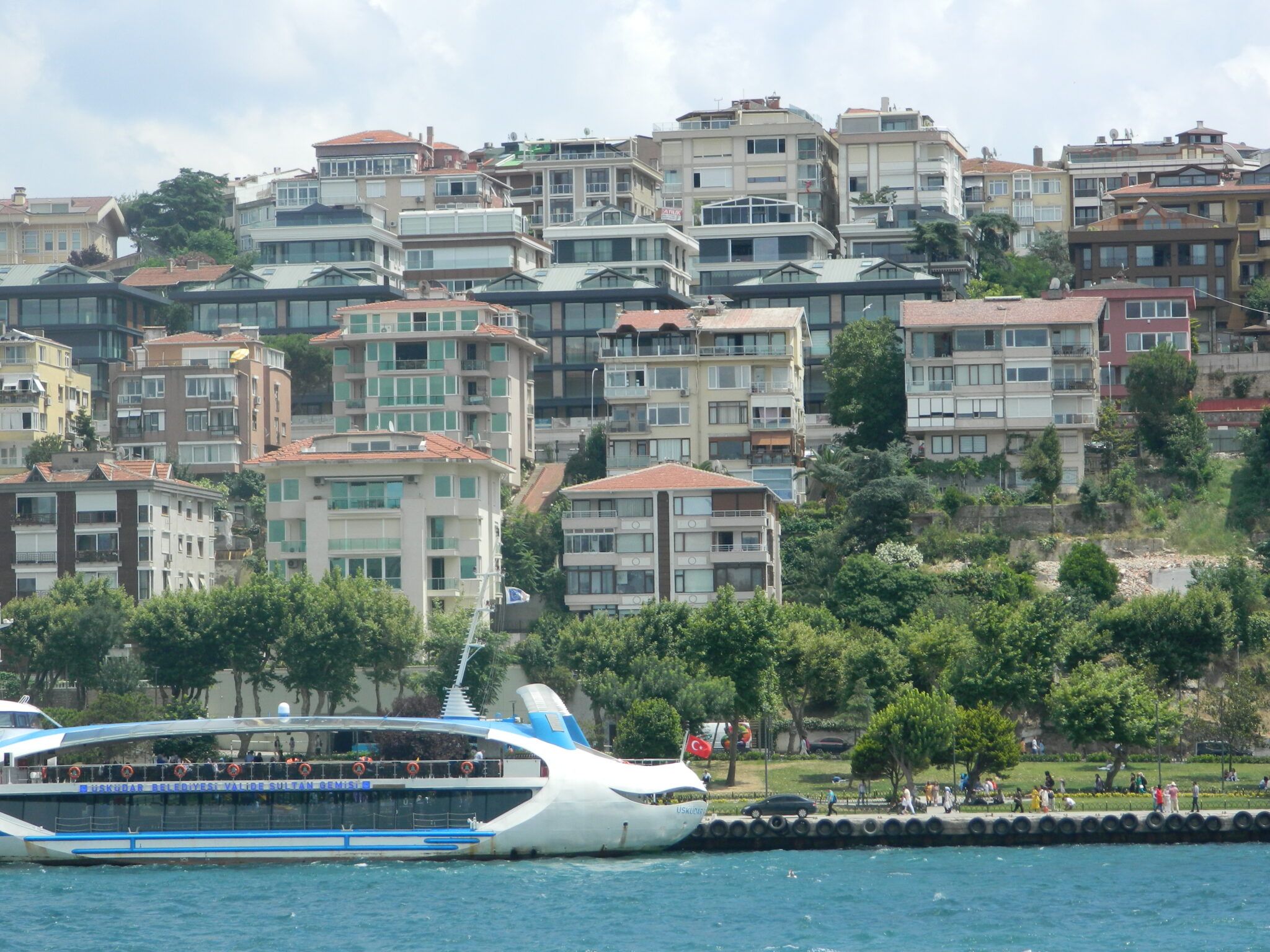
(Photo credits by PintsizedPioneer)
The main districts one is likely to frequent on the Asian side are Kadıköy and Üsküdar, which is next to Kadıköy and is more historical. In this instalment, we will focus on Kadıköy, which has more of a youthful vibe. Generally, people frequent the more popular and famous mosques on the European side, but Üsküdar does have its own historic and religious sites, which merit attention themselves also from the discerning traveller.
Speaking Of Which: Turkish
At this point, it may be good to discuss Turkish a bit. Undoubtedly, foreigners may be a bit bewildered when first arriving in İstanbul and the country itself. Signage may look a bit different, and our useful Indo-European cognates (ie Wasser (Germanic) … Tavola (Italic) … Port (Gallo-Romance) will not come in handy here.
Turkish or Türkçe is, well, a Turkic language. Its ancestry is completely separate from any Indo-European stock, excluding lexical borrowings and such. Today, Turkic peoples are spread out largely in Central Asia, but also extend into Siberia and Anatolia, like modern Turks.
As a result of this separate lineage, Turkish does not really resemble other languages west of Anatolia. Actually, I take that back, because Hungarian (and Finnish to an extent) share some features, although they are genetically unrelated to Turkic languages. Nevertheless, colloquially, some Turks may find Hungarians’ distinct history analogous by means of both being derived from central Asian steppe peoples long ago.
Nevertheless, one may find Turkish challenging if he or she expects it to be like other general European languages.
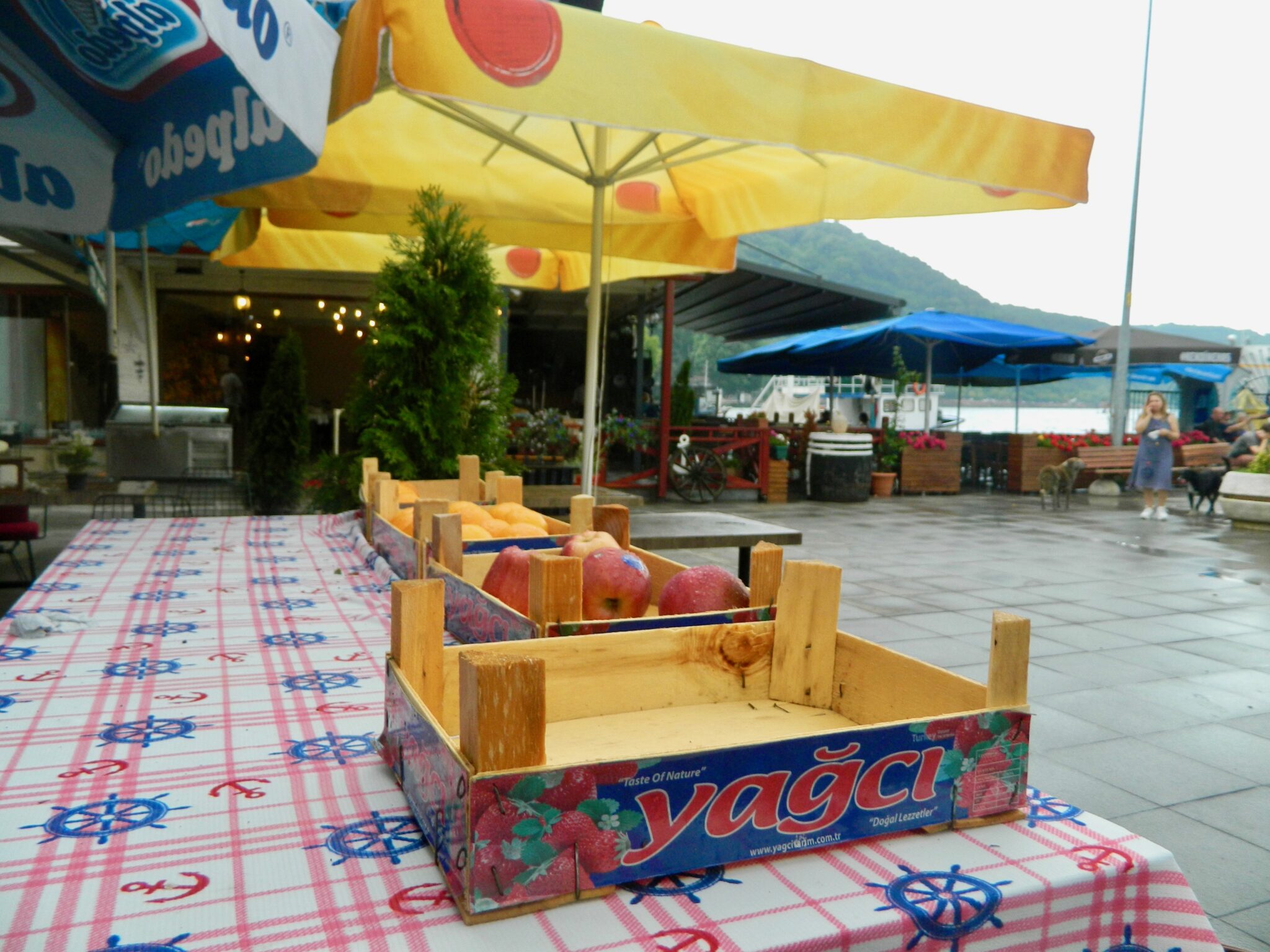
(Photo credits by PintsizedPioneer)
Look out for agglutination (the stringing of morphemes together), its SOV (subject-object-verb) word order, and a few cases that many modern Indo-European languages have lost today. That is Turkish in the most broad terms. It is a fascinating language with vowel harmony, honorifics, and a lengthy written history.
This information is all rather technical, but may help explain some frustration for tourists who are having issues picking up the language even a bit. Knowing a little French will help with Italian like knowing Czech will help with Polish … None of the above will help with Turkish unless they are loanwords, really.
That said, if one speaks a language from the Balkans or knows Levantine variants of Arabic, there might be some shared vocabulary as a result of historical influence from the Ottoman empire. For Croatian goddess, Nina, many words were familiar as well as foodstuffs. She was even mistaken as Turkish on occasion.
Okumak: ‘read’ in Turkish
For the most part, actual pronunciation is rather regular in relation to Turkish script unlike English, which has a cluster fuck of options for spelling. The unfamiliar characters for foreigners will likely include:
- the umlaut ü (like the German ‘ü’, indicates rounding of the lips)
- the cedilla ç (as a ‘ch’ in English)
- the cedilla ş (which indicates the /ʃ/ or ‘sh’ in English)
- the umlaut ö (which is like the Danish ‘ø’ and also indicates rounding of the lips)
- the dotless ı (which is actually a back vowel /ɯ/ and not the English ‘i’ in beet)
- and, this motherfucker ğ (which can either lengthen a vowel, be silent, or manifest as /j/ or a ‘y’ sound in English)
And, those are the heavy hitters for foreign speakers. The ‘c’ in Turkish also is pronounced differently than one might expect. It sounds like a ‘j’ as in jelly in English, which is rendered as /d͡ʒ/ phonetically.
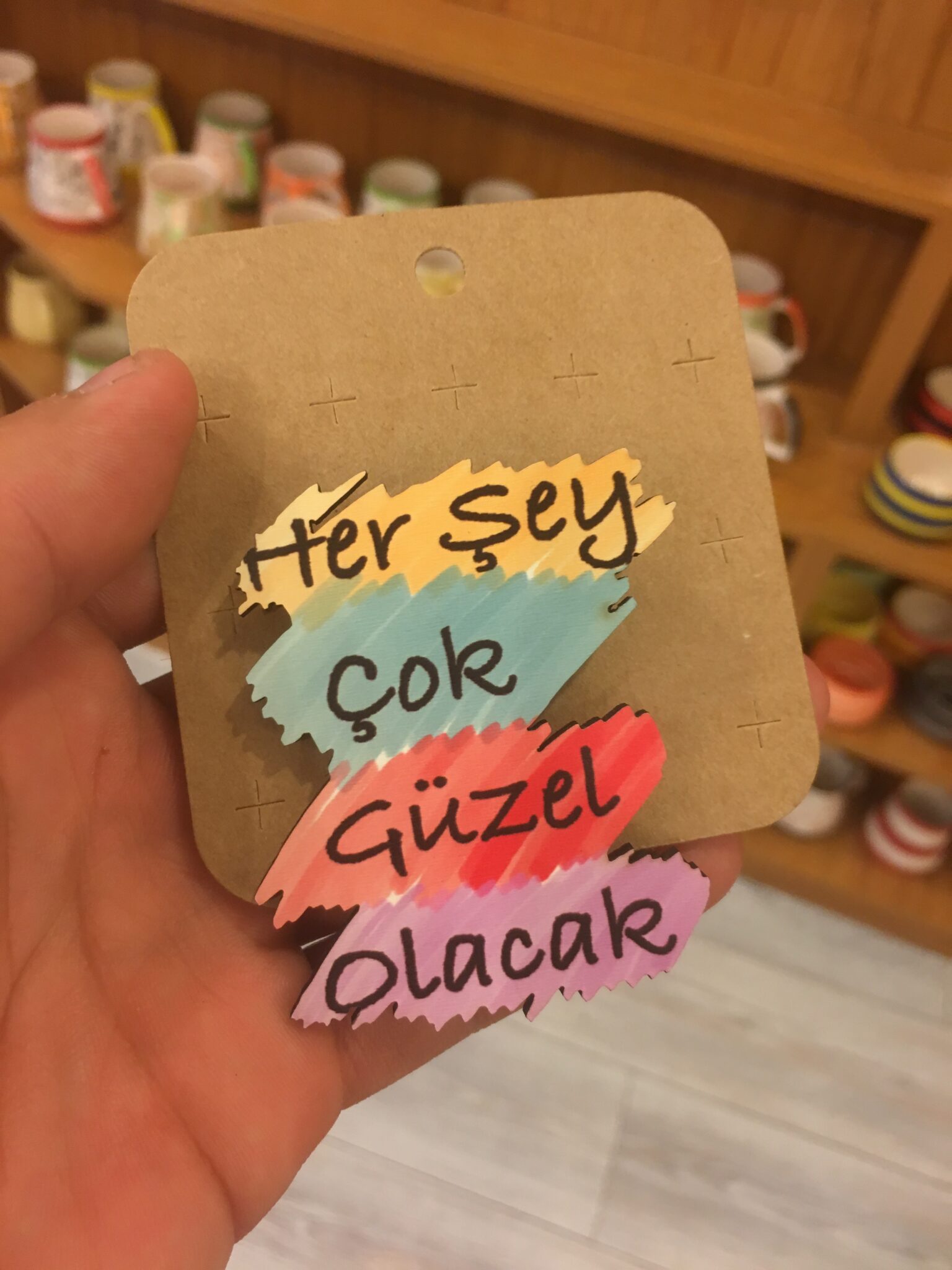
(Photo credits by PintsizedPioneer)
I am not an expert in Turkic languages by any means. However, as a linguist, I was able to pick up the sound correspondences pretty quickly since I had an idea of them beforehand. Also, as I know German, the rounded sounds are not difficult for me. And, Korean has this /ɯ/ sound too, which is rendered as 으 in the language.
It takes time, and it is frustrating when one cannot even read a menu, so my best suggestion is to listen more than speak to pick up the lingo and ask for repetition. Most Turks are very proud of their language and have some knowledge of it too given its political history; Atatürk (the modern nation’s founder) orchestrated many alphabet reforms himself.
This name will surely pop up a lot while in Turkey too.
Someone Say Kadıköy!
Turkish is by far the most spoken Turkic language, but many of these sounds are shared within the linguistic family. It will serve one well to remember them if one ventures to possibly Azerbaijan, Kazakhstan, or Uzbekistan among others. (Azerbaijani/Azeri, Kazakh, and Uzbek are also all well-known Turkic tongues.)
So, one would pronounce Kadıköy as actually [kadɯkœj]. (If you cannot read IPA, I am sorry.) And, don’t worry, you can still enjoy this area even if you can’t say it exactly correct.
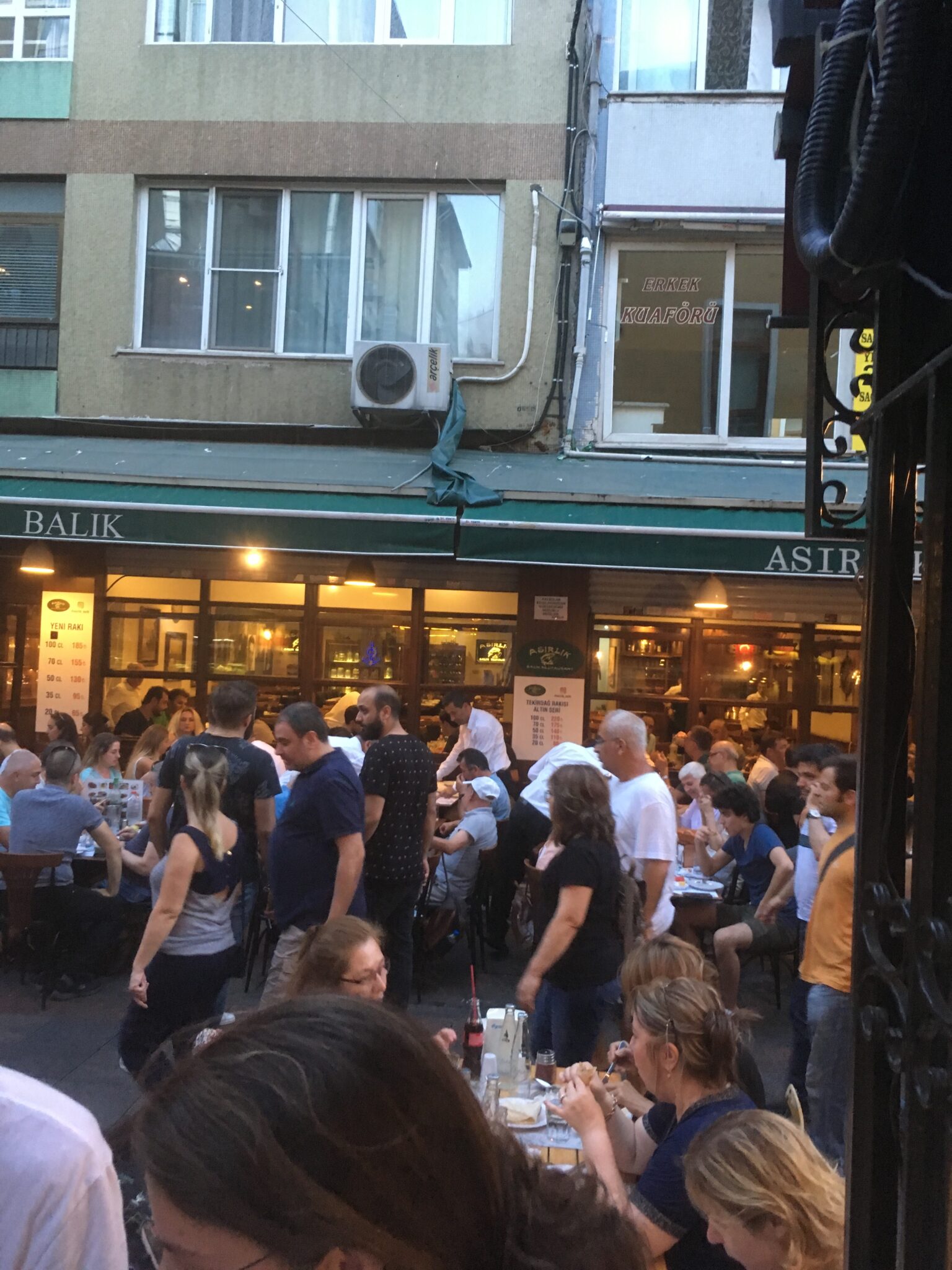
(Photo credits by PintsizedPioneer)
Kadıköy itself is a heavily populated area on the banks of Bosphorus that caters to a mixed crowd.
Locals enjoy its many eateries, art scenes, bars, and parks. And, during the weekend and holidays, its narrow alleyways are packed and lively.
Nina and I ventured here on a few occasions, and on one of them, we met up with a Turkish friend, swing dancer supreme, Deniz.
She with her local crew met us at one of the typical coffee shops, and then we dined at one of the most popular restaurants in the neighbourhood: Çiya.
Can you pronounce it? It is [t͡ʃiya] like ‘chia (seeds)’ in English.
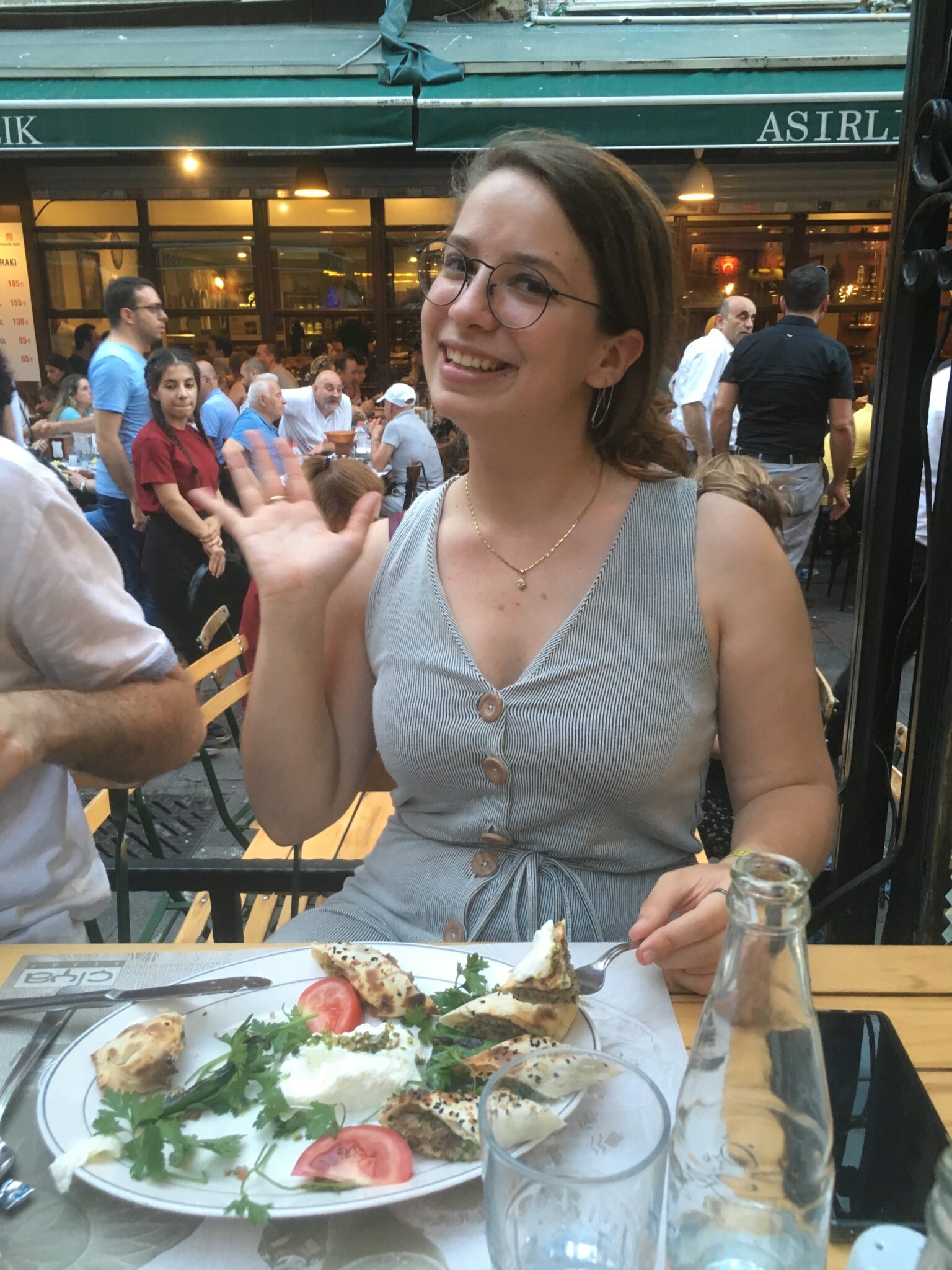
(Photo credits by PintsizedPioneer)
This restaurant like many in the region spills out into the street. It is well-known and features a huge menu of traditional Turkish cuisine. One may need to fight for a table, but it is good stuff and worth it!
Get some meze, order a kebab, and also try Ayran! It is a traditional sour-ish milk drink, popular with Turks. It is not everyone’s favourite (and I would not recommend drinking while drunk, from experience), but it will complete the meal and vibe here.
The Perks of Parks & Alleyways
On most quiet, warm summer nights, locals head to one of the many parks in Kadıköy for a late night picnic with beers and music and often dancing.
Swing dancing is actually pretty popular, and it fits into the old timey İstanbul aesthetic too. In general, there is a pretty big art scene in İstanbul, but in Kadıköy in particular. Look for galleries, homemade and eclectic shops for clothing, and spontaneous and planned dancing. When we went to the park (Moda Coastal Park and Pathway) for Deniz’s Swing night, there were many people also engaged in traditional Turkish dancing just for the fun of it.
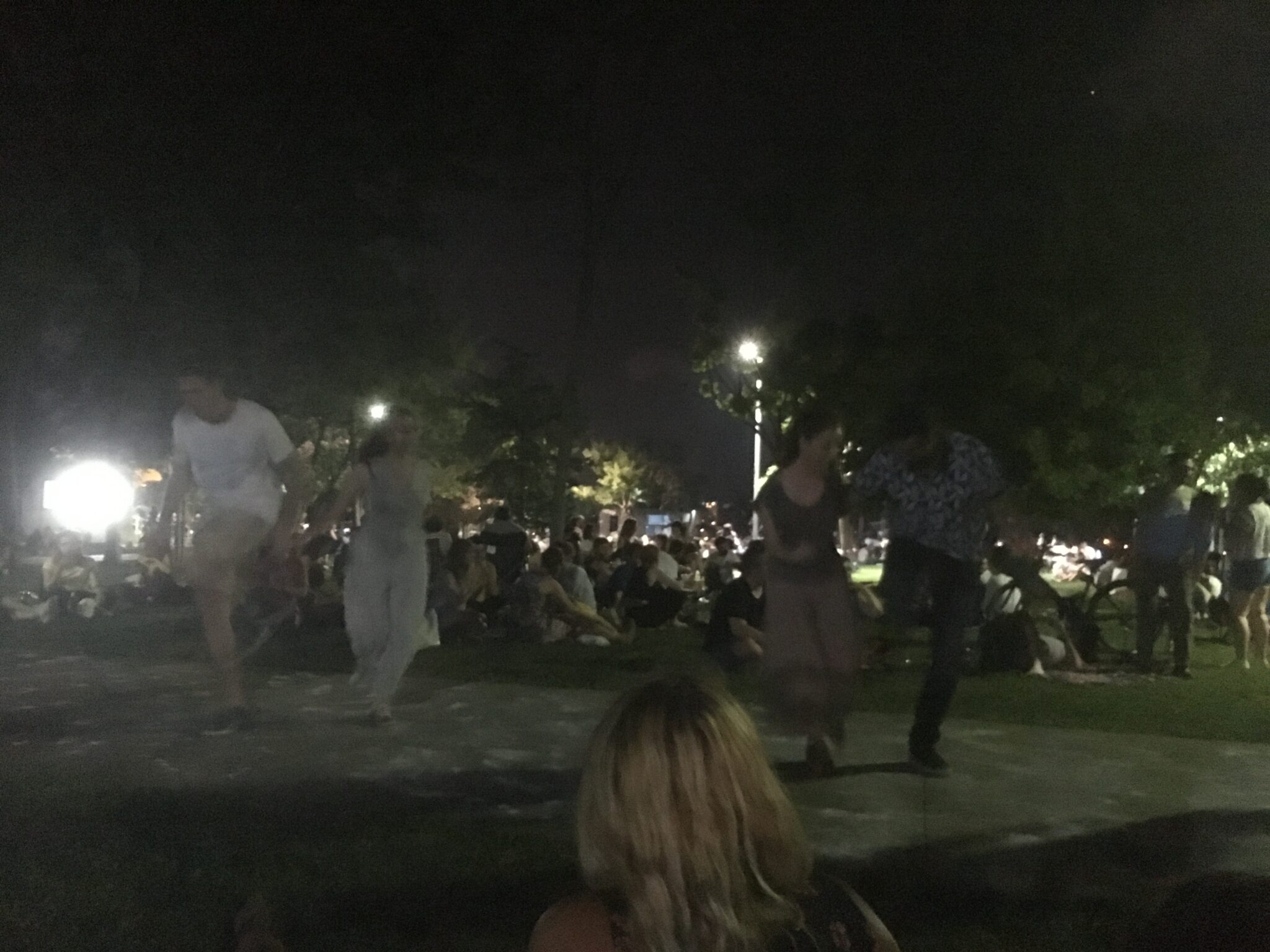
(Photo credits by PintsizedPioneer)
This energy is not atypical for the neighbourhood.
The bar scene is popular too in Kadıköy. Given the rather claustrophobic design of the streets, the bars and clubs expand greatly into their buildings and below into subterranean depths sometimes. They might not look like much on the outside, but do not be fooled. These venues are expansive and extremely fun and modern.
The Caferağa area within Kadıköy is likely one’s best bet for a good night out. It is also close to the ferry terminal (as is much of Kadıköy), but more on that later.
My favourite bar here is Arka Oda, which has a beautiful interior and has multiple levels for dancing or relaxing with a drink. It finds itself on a stretch of bars that are all rather fun, if not a bit rowdy depending on the evening. Arka Oda also features a terrace for a little fresh air, which is much appreciated on a night out for me.

(Photo credits by Croatian goddess, Nina)
The street that it is on is called Kadife Sokak, which also possesses another great bar called Punch. Although non-descriptive on the outside, the interior is rather large and cosy with a jaunty, but sophisticated feel. It also has music programs for those who want a more clubbing vibe, but given its sheer size, the venue can cater to different clientele. It also houses a restaurant for those who get peckish with their booze.
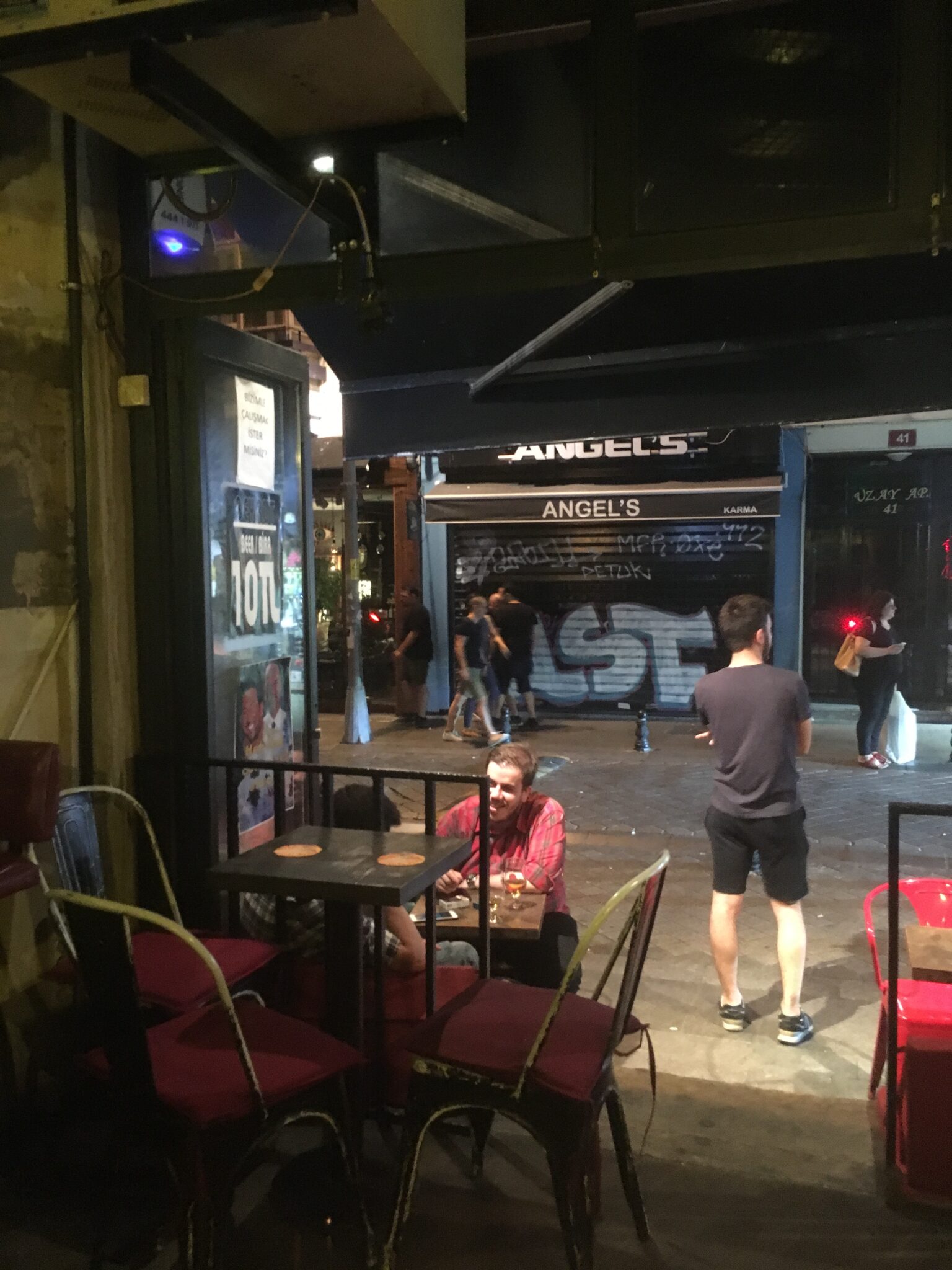
(Photo credits by PintsizedPioneer)
During the daytime, for a relaxed read or catching up, I recommend Rafine Espresso Bar for a coffee or perhaps ZOO, which is right around the corner also on Sarraf Ali Sokak.
There are truly tons of hidden gems throughout Kadıköy; I barely scratch the surface here. I also suggest just strolling down Moda Caddessi and sampling the sights, bit by bit. It is a central street of Caferağa, and doing so will give one a good grounding for what is to come and what looks interesting in the area.
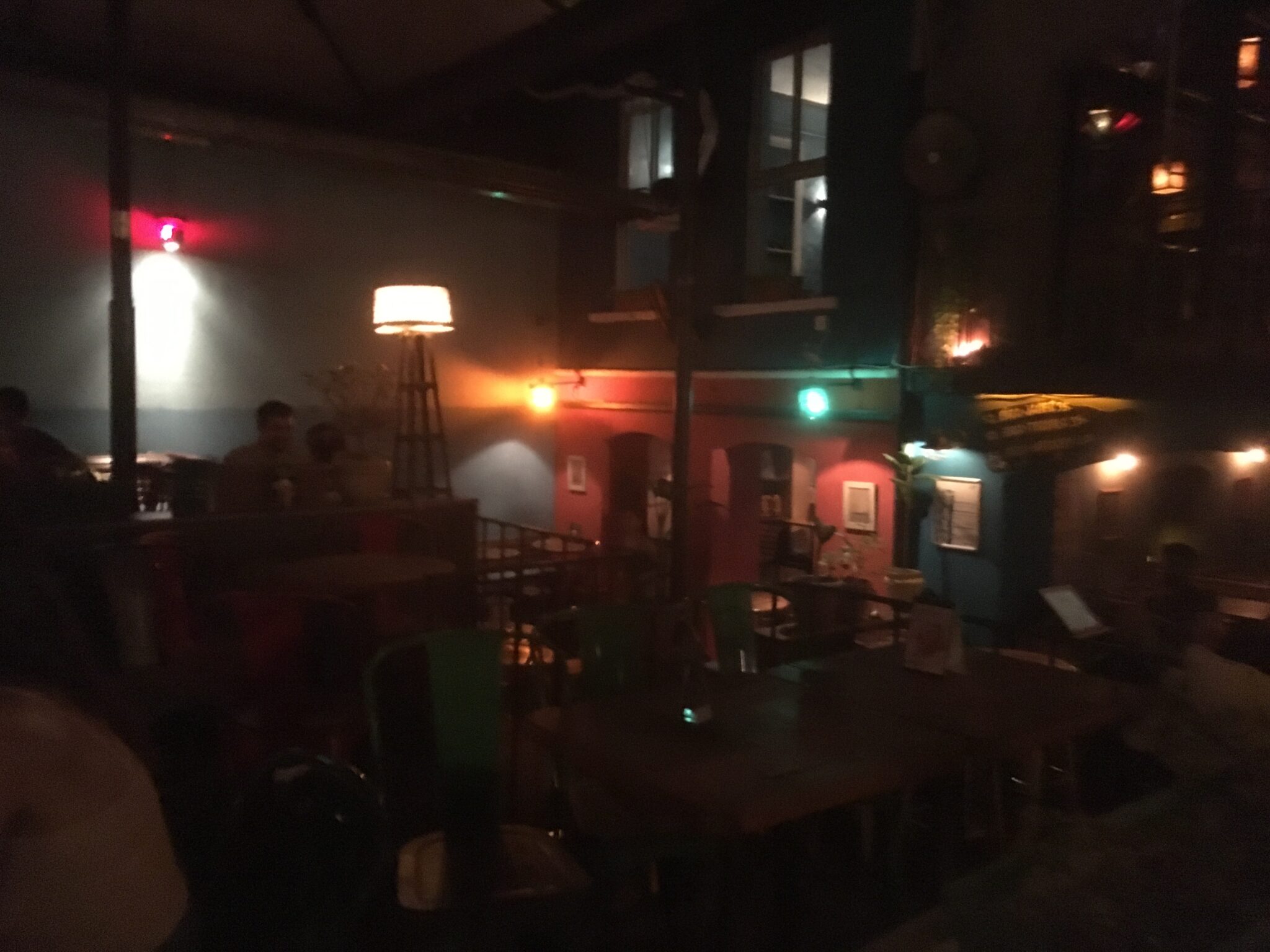
(Photo credits by PintsizedPioneer)
Kadıköy is definitely a place that merits returning to multiple times to soak it all in. It is both compact, but abundant simultaneously. It is the general motif of the neighbourhood.
The Great Crossing
At this point, we are all likely enticed to head over and enjoy some dancing and drinking and revelry. However, the questions remains: how the hell do I get to Kadıköy and most importantly, back my accomodation?
Well, there a few options that vary depending on one’s comfort level and the time of day.

(Photo credits by PintsizedPioneer)
The most typical that comes to mind is the ferry. Boats go frequently during the day and evening from the European side to the Asian side and vice versa. To head to Kadıköy, I suggest either the Karaköy ferry terminal if one is close to Galata or the bazaars or the Beşiktaş terminal if one is closer to perhaps Taksim.
It should be apparent which ferry goes to where through the schedule, but in the beginning, it is easy to make a mistake. There is a rush of people entering and exiting, and one can be easily confused by a process that everyone else seems to be able to do blindfolded. Take a breath, and go with the flow. Worst case scenario, you end up on the other side of river at the wrong stop (probably Üsküdar) or likely just more south by the bazaars at Eminönü.

(Photo credits by PintsizedPioneer)
These ferries cost very little, but do take some time. Refill and bonk one’s İstanbul Card to board. These cards are essential for transport in the city to use the metro, trams, and ferries. Essentially, any form of public transport. And, once you have one, you are good to go.
They can be purchased in most metro stations; however, oftentimes, the machines for them are out of the physical cards since they are so popular. If there are any issues and they are not dispensing them, simply find another machine and hope for the best.
The crossings take about half an hour and are a scenic and enjoyable for tourists like us, but a daily reality for locals.
However, the ferries do eventually stop at night, so depending on when/if one returns to the European side, it is necessary to either take the metro system, bus (which I would not recommend because it is the most complicated method), or … the other more local option …
Dolmuş, dolmuş!
A dolmuş is shared cab that can fit about eight people comfortably. They were initially started by commuters before the ferries and other public transport were readily available. People would cram into them and then be taken to the other side of the city to work.
Today, they still exist and function like any other form of ridesharing. They tend to drop people off in big name locations/ consolidate trips as much as possible too. Like we said, just knowing how to navigate Taksim is quite useful and an easy stop for a driver.
And so, after a late night out, taking a dolmuş is a great and cheap option if the ferries are not running.
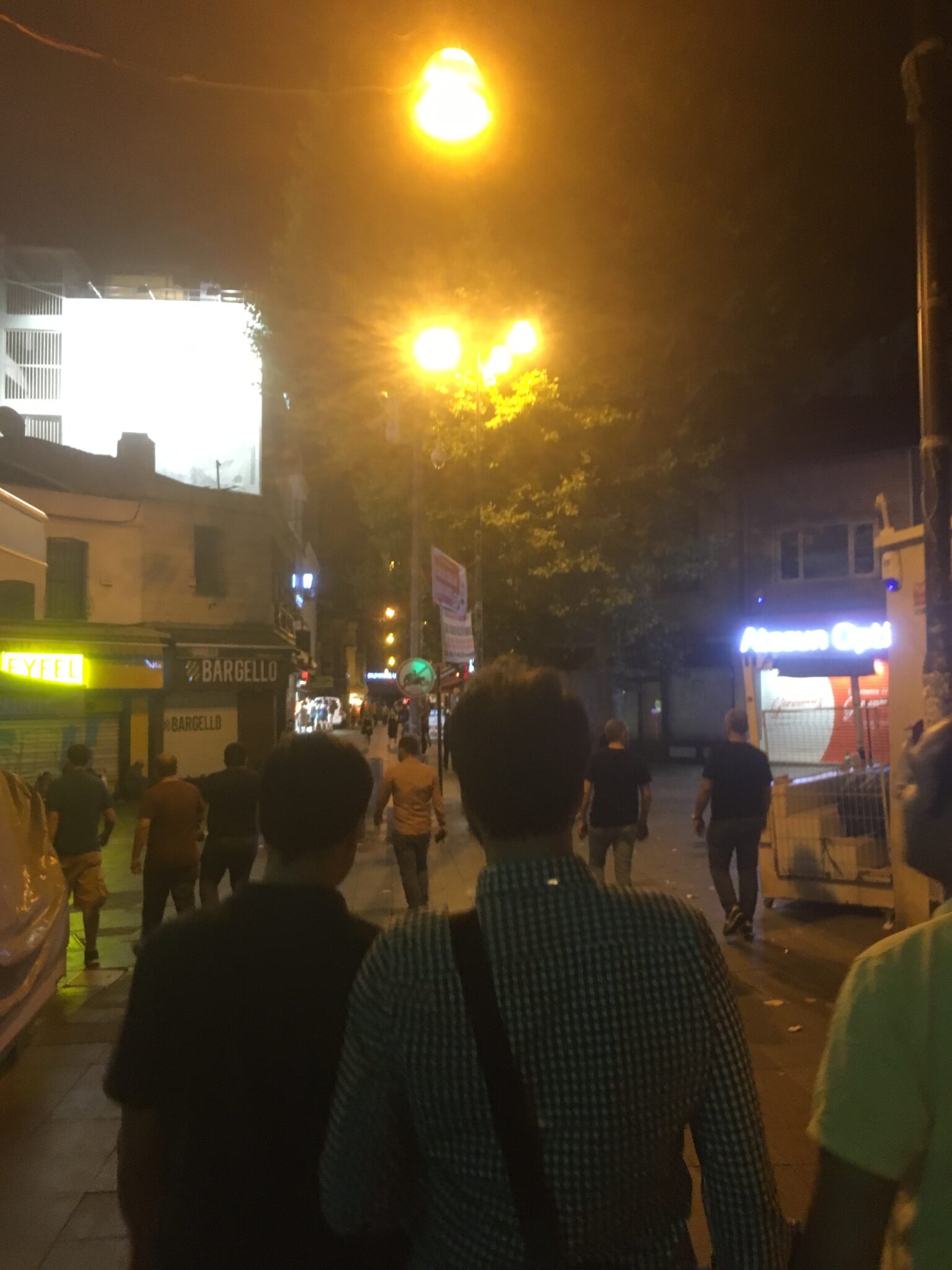
(Photo credits by PintsizedPioneer)
It may seem a bit sketchy, but it is well worth it. And, I understand if one is not entirely comfortable taking one. They are not always clearly marked, so I would not just find a big cab and assume it is a dolmuş either.
Typically, they are located by the port terminal (near Rıhtım Caddessi (caddessi is just ‘street’ in Turkish)). Look for any signage that says ‘mini-bus’ or ‘dolmuş’. Essentially, if it looks like a bunch of randos are sitting waiting in a cab to fill up with someone calling out the intended drop-off location, it is a dolmuş.
Friendly locals at the bars and anyone acquainted with Kadıköy should be able to point one in the right direction here. However, as always and as someone who was molested in a cab (quite recently), use one’s best judgement and if it does not feel right, take the metro or ferry if running.
Prices range to just a few lira in these shared cabs, and use the buddy system perhaps? In general, dolmuşlar are pretty popular and frequented by many different people, so one should feel safe to use it. For many Turks, it is just a way of life.
Oh boy, Kadıköy!
So much to do, so little time … Limitless potential …
It is easy to be swept up in the fun of this neighbourhood. Keep in mind, Kadıköy is just one of the many popular areas for Turkish youth to let loose. Galata is great for an evening out too, and even areas adjacent to Taksim are quite lively and also feature the famous hookah lounges/gardens.
Nevertheless, one could base his or her whole İstanbul trip around Kadıköy, especially if one stays on the Anatolian side.
It is best to keep it all in perspective; there is still so much to see and sample in the city, which makes İstanbul, simply, İstanbul. That said, the next time I find myself by the Bosphorus, I am spending my first night bar-hopping through this district in hopes of finding a new favourite joint.
Two more instalments to go on our journey around İstanbul and its popular sights! Happy New Year too, and I hope you enjoyed our first post of 2020. We have lots in store for this year with both domestic and international trips. Stay tuned!
